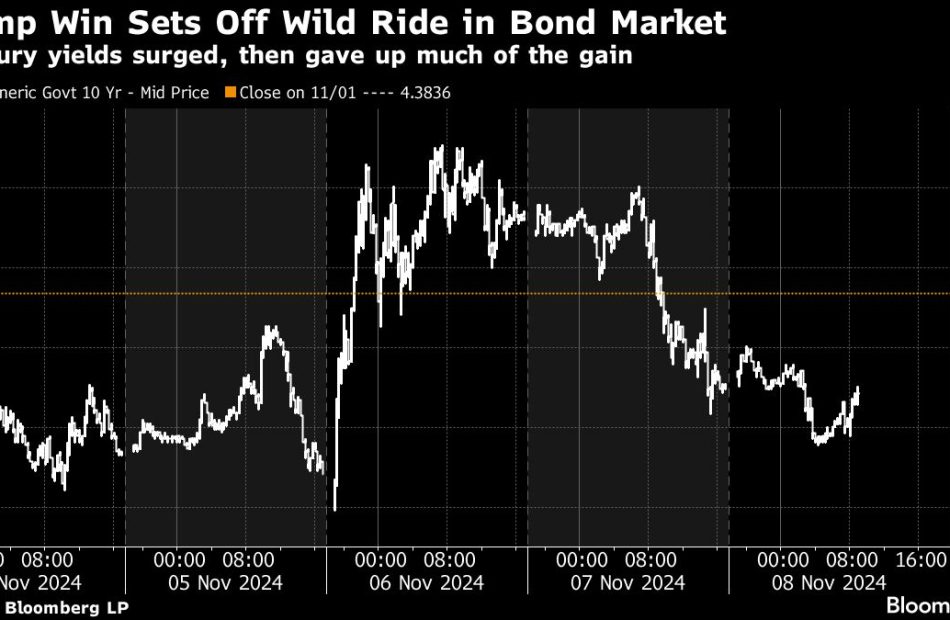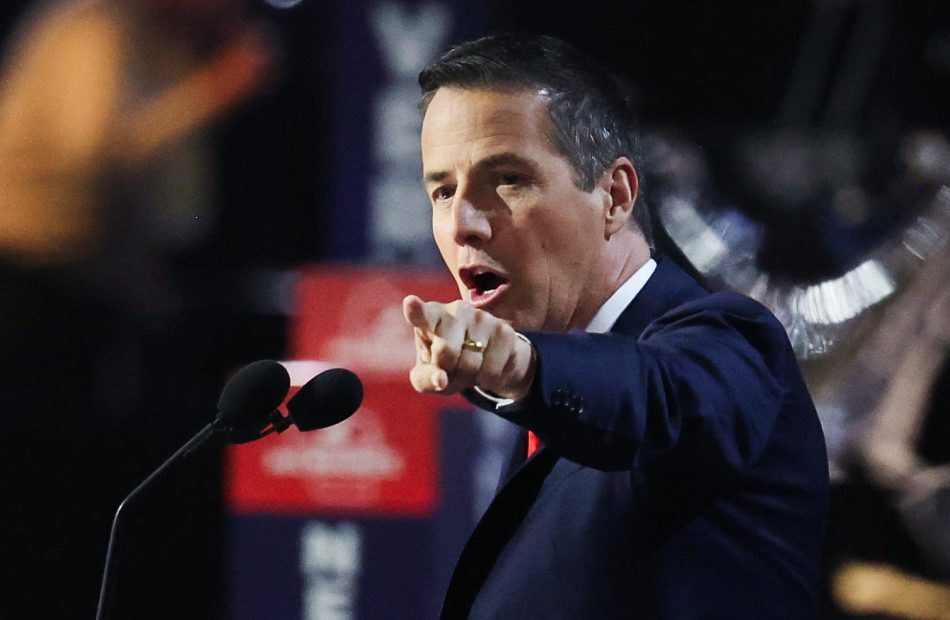Eli Lilly Just Hit a Milestone That Disappointed. Here's Why You Should Still Buy the Stock.
Even a juggernaut like Eli Lilly (NYSE: LLY) can miss the mark sometimes. When it reported its third-quarter earnings on Oct. 30, its share price plunged to the tune of 11% before recovering somewhat, signaling that the market’s reception to its financial performance was strongly negative.
Shareholders discovered that there’s reason to believe that a previously hypothesized risk is now real and that it presents a possible threat to the stock’s prior outstanding performance. Yet the stock is still unambiguously one of the better investments available right now.
Start Your Mornings Smarter! Wake up with Breakfast news in your inbox every market day. Sign Up For Free »
Here’s what happened and why Eli Lilly stock is still worth buying.
First, the bad news: Lilly slightly cut its guidance for 2024. Whereas it previously anticipated bringing in as much as $46.6 billion in sales, it’s now only expecting a max of $46 billion. The reduced guidance for earnings per share (EPS) was even more concerning, with the new high-end estimate of $12.55 where prior guidance called for $15.60 at the high end.
During Q3, Eli Lilly brought in $11.4 billion in sales, up 20% from a year prior, and non-GAAP (adjusted) EPS of $1.18, which was $0.29 less than what the average of Wall Street analysts had estimated. These would normally be considered great results for a pharmaceutical company of Lilly’s (massive) size.
The culprit for the underperformance is where things get interesting. Per management, during the second quarter, wholesalers of its blockbuster drugs for type 2 diabetes and obesity, Mounjaro and Zepbound, essentially loaded up on more doses than there was demand for. Then, during Q3, they didn’t need to buy as many additional doses from Lilly to shore up their inventories, which was a moderate headwind for revenue. Yet at the same time, sales of both medicines were responsible for the lion’s share of the company’s top line, as well as its top-line growth.
Those medicines were in a state of shortage in the U.S. over the last year or so, and have only recently, with the help of billions in manufacturing investments, reached a state of acceptable supply relative to the level of demand from new and current patients. In other words, it makes perfect sense that wholesalers finally purchased more doses than they were able to sell, reversing the high-demand dynamic of the prior quarters.
Still, this new development and the market’s reaction to it means that Lilly has doubtlessly reached a grim milestone. It isn’t that the market for its best-selling drugs is fully saturated and the heyday of growth is over. It’s that the market’s expectations are for the most intense period of that heyday to go on forever, which has now become priced into the valuation of the stock.
Fueled by Another Acquisition, Energy Transfer Continues to Deliver Record-Setting Results
Energy Transfer (NYSE: ET) has been on an acquisition binge. The midstream giant recently closed its nearly $3.1 billion purchase of WTG Midstream, which followed its $7.1 billion merger with fellow master limited partnership (MLP) Crestwood Equity Partners last November. On top of that, the company has continued to invest heavily in organically expanding its operations.
Those investments helped fuel record volumes across several of the MLP’s assets during the third quarter, contributing to its strong earnings growth. With a large and growing pipeline of expansion opportunities, Energy Transfer should have plenty of fuel to continue growing.
Start Your Mornings Smarter! Wake up with Breakfast news in your inbox every market day. Sign Up For Free »
Energy Transfer delivered robust volume growth across nearly its entire franchise during the third quarter, setting several new partnership records:
-
Crude oil transportation: Up 25% to a record level.
-
Crude oil export volume: Up 49%.
-
Midstream gathered volume: Up 6% to a record level.
-
Midstream natural gas liquids (NGLs) produced volume: Up 26% to a record level.
-
NGL fractionation volume: Up 12% to a record level.
-
Total NGL exports: Up 3% to a record level.
-
NGL transportation volume: Up 4% to a record level.
-
Refined products transportation volume: Up 4%.
The acquisition of Crestwood Equity Partners and WTG Midstream helped fuel the record volume. The MLP also benefited from recently completed expansion projects and a strong market environment.
Energy Transfer’s record-setting volume helped fuel strong earnings growth in the quarter. The MLP generated nearly $4 billion of earnings before interest, taxes, depreciation, and amortization (EBITDA), an almost 12% increase from the year-ago period. Meanwhile, distributable cash flow was roughly flat, compared to the year-ago period, at about $2 billion due to increased maintenance capital spending.
The MLP still produced enough cash to cover its high-yielding distribution (nearly 7.5% yield), with ample room to spare. It paid $1.1 billion of distributions during the period, leaving roughly $900 million in excess free cash flow. That easily covered the MLP’s growth capital spending ($724 million), enabling it to maintain its strong balance sheet.
Energy Transfer is in a strong position to continue growing its volume and earnings. It should continue to get a boost from the WTG Energy deal, which it closed in July.
Also in July, the midstream company closed an accretive joint venture with affiliated MLP Sunoco to combine their crude oil and produced water-gathering assets in the Permian Basin. Energy Transfer has ample financial flexibility to continue making accretive acquisitions as opportunities arise.
2 Magnificent S&P 500 Dividend Stocks Down Year to Date to Buy and Hold Forever
The S&P 500 (SNPINDEX: ^GSPC) has a lot of winners in its ranks, which is why the famous stock market barometer is up more than 31% since the start of 2024 as I write this.
Yet in any collection numbering hundreds of stocks, there are bound to be some laggards, and that’s the case with this closely watched index. As we prepare to leave this year behind, this is a look at a now-undervalued pair that are down year to date in price, yet continue to shower their investors with dividends. Here’s why I’m drawn to these two tarnished beauties: Pfizer (NYSE: PFE) and Nike (NYSE: NKE).
Start Your Mornings Smarter! Wake up with Breakfast news in your inbox every market day. Sign Up For Free »
In the somewhat upside-down world of the pharmaceutical industry, a scary global health emergency can be quite the boon for business. During the COVID pandemic’s height, for example, Pfizer was not only the co-developer of the widely distributed Comirnaty vaccine, it was also the entity behind the go-to drug therapy Paxlovid. This one-two combination pushed revenue and profitability stratosphere-high during those otherwise trying times.
That was then, this is now. For investors, it’s been a case of “What have you done for me lately?” with Pfizer. Comirnaty and Paxlovid are hard acts to follow, and both the company’s top and bottom lines are down from their pandemic peaks.
Adding to Pfizer’s challenges, activist investor Starboard recently bought an anchor stake, and has since been agitating for changes in a pull-no-punches, activist investor sort of way. Starboard essentially argues that Pfizer’s strategy of acquiring promising drugs is pricey, and hasn’t produced meaningful results.
I look at it differently. The pharmaceutical development process is arduous and resource-consuming, so for a deep-pocketed operator like Pfizer, it often makes sense to buy products that have already traveled some distance down the pipeline. I think the company’s deal-making has been sensible, like when it closed a $43 billion arrangement to acquire cancer-focused biotech Seagen late last year.
Pfizer left Starboard with a bit of egg on its face with the third-quarter results it unveiled at the end of October. Again, COVID is still a menace, and thankfully for the world — and Pfizer investors — Comirnaty and Paxlovid were ready for the fight. Sales of both leaped on a year-over-year basis, helping the company to a monster 31% improvement in revenue (to $17.7 billion), and a flip into non-GAAP (adjusted) profitability, to more than $6 billion.
Monsha'at: Biban 2024 accelerates transformation of Saudi entrepreneurship with over SAR 10.6 billion worth of agreements
RIYADH, Saudi Arabia, Nov. 09, 2024 (GLOBE NEWSWIRE) — The Small and Medium Enterprises General Authority of the Kingdom of Saudi Arabia, Monsha’at, has taken another important step towards reshaping the Saudi entrepreneurship landscape, following the announcement of 16 agreements worth more than SAR 10.6 billion on the fourth day of Biban24.
Extending its ongoing efforts to empower Saudi entrepreneurs and bolster the Kingdom’s SME infrastructure, Monsha’at also officially announced a wide selection of agreements to allocate substantial financial portfolios to financing Saudi Arabia’s rapidly growing community of entrepreneurs. This includes a portfolio worth SAR 3.1 billion, in collaboration with Tayseer Finance; as well as a portfolio valued at SAR 2 billion with Lendo Company. Monsha’at also announced a SAR 1 billion portfolio with Tarmeez Capital. These agreements are fully geared towards providing SMEs with steppingstones to success and facilitating more seamless and ready access to vital tools and resources.
The National Commercial Bank (NCB) also announced the launch of 15 new branches specialized in supporting SMEs. Additionally, Arab Bank launched the “anb digital”, a platform created to enable SMEs to submit financing applications, receive preliminary approvals, and sign contracts electronically.
The fourth day of Biban24 — the Kingdom’s flagship SME forum — also placed an emphasis on upskilling and capacity building, with a range of seminars and workshops being hosted. Covering a diversity of subjects and areas of interest, these workshops and seminars were held to empower participants, attendees and entrepreneurs from the region and beyond with access to all-important insights, resources and connections.
Organized by Monsha’at, the Small and Medium Enterprises General Authority of the Kingdom of Saudi Arabia, the event is being hosted at the Riyadh Front Exhibition & Conference Center. Held under the theme of Global Destination for Opportunities, the gathering is focused on driving the growth and development of the Saudi entrepreneurial ecosystem for local and international entrepreneurs.
In line with this goal — and the objectives of Vision 2030 — the forum will immerse visitors and attendees in an enabling atmosphere conducive to innovation, with participants being invited to explore 9 key areas, or “Doors”. These include the “Enablement”, “Fast-growing Enterprises”, “Funding and Investment”, “Startup”, “Innovation”, “E-commerce”, “Start”, “Franchise”, and “Market” Doors.
These Doors are specialized areas where businesses and entrepreneurs will be given the opportunity to explore how to reach the next level and fulfil their business potential.
Contact:
Tarek Chahine
tchahine@webershandwick.com

Market News and Data brought to you by Benzinga APIs
© 2024 Benzinga.com. Benzinga does not provide investment advice. All rights reserved.
JPMorgan’s Michele Says 5% Yields Would Be ‘Difficult’ to Absorb
(Bloomberg) — The Treasury market turbulence that followed Donald Trump’s victory has JPMorgan Asset Management’s bond chief warning that yields could return to a level that might endanger the stock market’s record run.
Most Read from Bloomberg
Bond prices tumbled dramatically immediately after Trump’s win this week, fanned by speculation the Republican will reignite inflation by cutting taxes and slapping tariffs on imports.
While 10-year yields have pulled back after climbing as high as 4.48%, it’s plausible they could return to 5% if Trump’s expected policies are enacted, according to Bob Michele, the chief investment officer and head of global fixed income at JPMorgan Asset Management. Vincent Mortier, the chief investment officer of Amundi SA, also flagged that as a potentially key level that could cause a shift of cash from equities into bonds.
“5% proved to be a very difficult level for markets to absorb a couple years ago,” Michele said at his firm’s ETF Symposium event on Thursday.
“I’d say that discount rate applied to a lot of asset classes is going to cause a pause, a consolidation, and I don’t think that’s unrealistic. Is it going to happen over the next couple quarters? I don’t think so. When Congress and the new administration get seated and all these plans are to unfold, yeah, it could happen.”
Until Trump takes office in late January, Michele’s near-term expectation is that 10-year yields will settle around 4% as investors buy the dip in bonds. But once the new administration is seated and “legitimate proposals” are put on the table, he said the selloff could reignite.
So far, the bond market’s volatility has yet to exert a drag on stocks, which surged to new record highs. Optimism over potential corporate tax cuts and a deregulatory wave following Trump’s win fueled the surge, putting the S&P 500 on course for its best weekly performance of the year.
Paul Quinsee, JPMorgan Asset Management’s head of global equities, sees less risk to stocks from a rise in bond yields. While valuations are a concern, he anticipates that strong corporate profits will continue to support equities.
“We think next year, earnings are going to be up around 12%, 13%,” Quinsee said at the same event on Thursday. “With earnings growth ahead, we stay in the market.”
Michele is more skeptical. If Trump’s campaign proposals turn into policies that translate into higher inflation, the Federal Reserve — which enacted a widely expected quarter-percentage-point rate cut Thursday — would have to respond, he said.
Trump’s win brings good news for savers
The U.S. election results are producing opportunities for retirees and other savers — as long as they have some money set aside.
The rate on 10-year Treasury notes BX: TMUBMUSD10Y has leapt toward last year’s highs in the wake of Tuesday’s result, which has put the Republican Party in control of the White House and the Senate and may also leave it in control of the House of Representatives. The interest rates on inflation-protected U.S. government bonds are nearing the highest levels seen since the global financial crisis in 2008.
In fact, 10-year Treasury yields of nearly 4.7%, and long-term inflation-protected yields of nearly 2.3%, represent appealing low-risk savings opportunities for those looking for security and income rather than the volatile growth that comes from stocks.
Savers can buy these bonds directly at many brokerage firms, or they can buy a basket of bonds through mutual funds or exchange-traded funds.
A big risk is that these interest rates could keep rising. But they are already a dramatic improvement from where they were before the polls closed on Election Day, and from the lows seen in September.
The interest rate on the 10-year Treasury note jumped by 0.2 percentage points to 4.44% on news of the “red wave” election. The rate on inflation-protected TIPS bonds rose as high as 2.25% on long-term bonds, a four-month high.
Long-term interest rates rose as the market digested the budgetary and economic implications of the election sweep.
“For a Treasury market that was already reeling, Trump’s victory has put additional pressure on rates, as evidenced by the historic move higher in Treasury yields as the Trump victory became clearer overnight,” Lawrence Gillum, chief fixed-income strategist for LPL Financial, said in a note to clients.
“Treasurys began to sharply bear steepen on a Trump victory as markets pencil in higher deficits and inflation,” the strategy team at TD Securities reported. “A Red Wave is likely to bring a wholesale renewal of the [2017] tax cuts and some additional tax cuts. This amounts to additional deficits of approximately $5 [trillion] over the coming decade relative to the current Congressional Budget Office (CBO) baseline.”
Someone Asked Nancy Pelosi, 'The Greatest Options Trader Of All Time,' What Stocks To Buy – To Her Face. It Went Exactly As You'd Imagine
In a viral interaction, comedian Alex Strenger confronted former House Speaker Nancy Pelosi during a book signing at the Texas Tribune Festival in Austin. Strenger, who posed as a Democrat, showered Pelosi with praise before asking the question everyone has on their mind: what stocks should they buy?
Don’t Miss:
Strenger went up to Pelosi as she autographed copies of her recently released book, “The Art of Power.” He called her “the greatest options trader of all time” and asked her head-on what stocks he should buy. Wearing a COVID mask and a Bernie Sanders cap, Strenger acted as a sincere supporter, praising Pelosi’s commitment to democracy and voicing worries about Donald Trump.
Trending: With over 7.8K investors including Meta, Google, And Amazon Execs — this AI Startup’s valuation has skyrocketed from $5 million to $85 million in just three years. Be an early investor with just $1,000 for only $0.50/share today before the offer closes in 2 weeks.
“Nancy, you’re the greatest options trader of all time,” Strenger said, maintaining a satirical tone. “I just want to know what stocks I should buy.” The crowd – and security – didn’t seem to find the humor in his request. Security guards eventually stepped in and escorted Strenger away, but not before he added a jab about Pelosi’s wealth compared to her congressional salary.
Pelosi, whose husband Paul has made headlines for his well-timed stock trades, mostly kept her composure. She briefly responded to Strenger’s remarks before security moved him aside.
Trending: The global games market is projected to generate $272B by the end of the year — for $0.55/share, this VC-backed startup with a 7M+ userbase gives investors easy access to this asset market.
The interaction went viral, drawing a range of reactions online. Reddit users were divided – some found Strenger’s questioning amusing and brave, while others thought he lacked confidence, noting his trembling voice.
Car dealer who will be US Senator says he and Trump want to overhaul car industry
The first car dealer ever elected to the U.S. Senate says the Trump agenda for the U.S. auto industry is one that, if enacted, would upend the strategy Detroit’s automakers have spent billions of dollars pursuing: The transition to electric cars.
For one thing, Republicans will look to freeze fuel economy standards for at least a decade — which would slow EV adoption and anger environmentalists. A second Donald Trump administration may also look to take away California’s ability to set its own strict emissions standards. Also, it is likely to repeal parts of the Inflation Reduction Act, including the $7,500 tax credit consumers receive now toward the purchase of an EV, a benefit that’s helped the Detroit automakers sell the cars.
Trump’s agenda could also include rewarding companies with big tax breaks if they build cars in the United States. These initiatives were laid out to the Detroit Free Press in an exclusive interview with Bernie Moreno, a former car dealer who won election Tuesday to the U.S. Senate from Ohio. Moreno said he and Trump, who endorsed each other, have discussed the industry and “I think we are on the same page here.”
The ideas are eye-popping considering General Motors has set 2035 as the date to be all-electric. Ford Motor Co. and Stellantis also have aggressive targets to add electrification to their lineups over the next decade. Industry watchers have warned that government action to slow EV research and production will ultimately leave American automakers behind as the world electrifies automotive transportation.
Environmental activists expressed alarm.
“Gutting the clean car standards makes no sense for drivers and their wallets, autoworkers or really anyone who breathes,” said Kathy Harris, director for clean vehicles at Natural Resources Defense Council. “The vehicle standards are the largest single action taken to address climate change, cutting as much carbon pollution as the entire U.S. economy now emits annually. With climate-fueled storms and heat waves harming so many already, the only winners would be Trump’s donors in the oil industry, as drivers would pay more at the pump.”
But Moreno, 57, backed by more than 1,000 auto dealers in a campaign that cost him and his rival, incumbent Democrat Sherrod Brown, a record $500 million, said the industry must focus on cars that people want to buy and can afford.
Ignoring market and making ‘cars people don’t want’
Moreno touched on several topics, most notably his issue with automakers pushing out EVs to meet what he said are unrealistic government fuel economy standards. That, he said, is causing sky-high prices for gasoline vehicles so companies can offset the billions they are losing by producing EVs. According to Kelley Blue Book, the average transaction price for a new vehicle in the U.S. was $48,397 in September.
“Anybody who even has a (basic) understanding of how the automobile industry works in America would tell you that the secret sauce is the marketplace,” Moreno said Thursday, noting that sales signal to automakers what consumers want and don’t want.
“But for the first time in automotive history, car companies decided, ‘We’re not going to pay attention to our customers. We’re going to pay attention to our political leaders and make cars people don’t want,’ ” Moreno said. “The money that has been wasted and lost in this … move to electric vehicles is just absolutely insane. Ford has lost billions of dollars trying to pacify political leaders that were completely unqualified to be giving any kind of advice.”
Ford’s EV division, called Ford Model e, lost $1.2 billion in pretax profits during the third quarter and is expected to lose about $5 billion by the year’s end.
While EVs are not yet profitable, GM has promised Wall Street it would get its EVs to a variable profit position — meaning the revenue GM earns from selling the vehicle exceeds the direct cost of producing it — by year-end.
Kelley Blue Book reported 346,309 EVs were sold in the third quarter in the country, a 7.8% increase from the year-ago quarter and putting the EV share of sales at 8.9%, the highest level recorded. But EV sales are still not growing at the pace the industry had been expecting, and Moreno’s contention is that most EV sales are being driven by incentives such as the $7,500 federal tax credit.
Making an ‘American automotive renaissance’
Moreno, the first car dealer elected to the Senate, is a 1989 graduate of the University of Michigan with a bachelor’s degree in business administration.
He said he and President-elect Trump share the same vision for overhauling the American auto industry: They want to create more jobs, bring down prices of new vehicles, repeal many of the environmental regulations that are driving automakers’ aggressive EV push and keep foreign-built cars offshore with high barriers to entry.
The plan includes lowering energy prices and incentivizing automakers to shift all manufacturing to the United States.
“We’re going to have an American energy and American automotive renaissance in this country unlike anything you’ve seen,” Moreno said.
He noted that all the initiatives would have to pass through Congress and Trump would have to support them as well, but Moreno said the two are like-minded.
It’s “the reason President Trump endorsed me and I endorsed President Trump,” Moreno said. A Trump spokesperson had not responded Friday morning to a message seeking comment.
Keeping China’s ‘garbage cars’ offshore
That includes the idea of doing whatever it takes to ensure vehicles are made in America, not China or Mexico and then imported here.
“The minute that China thinks they can come here with their cheap, fully electric garbage cars … they’re sadly mistaken. These cars will come in here with dramatically high tariffs that will make those cars unsellable,” Moreno said. “We’re not going to be suckers anymore. We’re going to protect American workers and American jobs.”
Industry watchers have praised the quality of cars and their advanced battery technology produced by China’s BYD, which late last year briefly slipped ahead of Tesla in global EV sales.
Trump has said he would impose a 10% to 20% tariff, the taxes put on goods coming into a country, on all imports, including tariffs as high as 60% to 100% for goods from China. Moreno said if some auto parts can’t be made here, “we’re not going to tariff those things immediately,” but anything that can be made here should be made here, he said.
“Look, Lincoln has decided to make a lot of its cars in China and that’s a bad decision,” Moreno said. “They’re going to find that it’s a very bad decision. They should be making those cars here.”
Ford builds the Lincoln Nautilus in China and GM builds its Buick Envision in China, both SUVs that are sold in the United States. All three Detroit automakers build various vehicles in Mexico that are sold in the U.S.
Ford said that over the past five years, it has exported more vehicles made in America to China than the other way around. Also, while its luxury brand, Lincoln, imports one model into the U.S., Ford has exported many more models, such as F-150, Mustang, Bronco, Explorer and Lincoln Continental, Aviator and Navigator.
Ford spokeswoman Robyn Jackson said in a statement to the Free Press, “Ford has bet on U.S. production and American workers more than any other automaker. As the No. 1 automaker in terms of production, employment and exporting vehicles from the USA to other markets, we look forward to working with the new administration and new Congress on policies that will ensure a thriving American auto industry and manufacturing sector. We are committed to offering customers the freedom of choice — great gas, hybrid and electric vehicles.”
Stern words for Stellantis
Moreno also had stern words for another member of the Detroit Three, noting that “companies like, Stellantis, which the United States government handed Chrysler Corp. for free in essence, they are laying off workers and shipping our jobs to Mexico. CEO Carlos Tavares needs to understand the United States government is not going to allow him to gut Chrysler, and Jeep, and Dodge, and Ram, and ship those cars and the direction overseas, in managing a company that was handed to them for free, which never should have been done.”
Moreno was referencing the way Chrysler came to be part of Stellantis predecessor Fiat Chrysler Automobiles in connection with the company’s 2009 bankruptcy.
Stellantis has come under fire for numerous job cuts this year as it has struggled to manage its inventory levels, and on Wednesday announced it would eliminate a shift at the Toledo Assembly Complex, meaning layoffs for 1,100 workers. The company has also confirmed it is expanding its truck plant in Saltillo, Mexico.
Jodi Tinson, a spokeswoman for Stellantis, said in a statement to the Free Press: “Stellantis congratulates Senator-elect Bernie Moreno on his election to the U.S. Senate. Because Toledo, Ohio, is an important part of our manufacturing footprint as the production home of the iconic Jeep Wrangler and Jeep Gladiator sold worldwide, we look forward to working with the senator-elect on policies that support a strong and competitive manufacturing base in the U.S.”
Old GM plant is symbolic of what needs to happen next
A native of Colombia, Moreno grew up in Florida before attending U-M. He had a dream of working for an automaker and at age 14, wrote a letter to General Motors’ then-CEO Roger Smith, suggesting ways Smith could improve the company. Smith wrote a lengthy reply, which Moreno still has, that began: “It’s not often I receive a letter from someone who is planning to take over my job,” according to a 2017 article on Moreno in Automotive News.
After a stint from 1987 to 1993 with then-GM brand Saturn, Moreno segued into auto retail, eventually building an empire of 15 dealerships across Ohio, Kentucky, Massachusetts and Florida that represented 30 brands. In 2017, he told Automotive News his brands generated more than $700 million in annual revenue. But by 2020, he sold all of his car dealerships.
Moreno’s entrepreneurial drive centered on the car business. In 2018, when GM first announced it would permanently close its Lordstown Assembly plant in northeast Ohio, which built the Chevrolet Cruze sedan, Moreno tried to save it.
As the Free Press reported in 2019, Moreno met with GM leaders. He wanted to buy 150,000 to 180,000 Cruze cars to start a global ride-hailing company similar to Uber. GM CEO Mary Barra rejected the idea. GM shuttered Lordstown that spring.
At that time, then-President Trump targeted GM and a local UAW president in tweets urging the carmaker to reopen the plant. But GM sold it to electric-truck maker Lordstown Motors that year. Lordstown Motors filed for federal bankruptcy protection in June 2023.
Foxconn, a Taiwan-based electronics assembler, now owns the 6.2 million-square-foot auto assembly plant in Lordstown, but it sits idle. Moreno drives past it often and he said it serves inspiration for his U.S. auto industry overhaul plans.
“I want to see that plant producing automobiles again,” Moreno said. “It is symbolic of what we need to do. We need to turn things around. That community did everything right. These are people who went to work every single day. They followed the rules, they tried to raise their families, and make ends meet and the rug got pulled out from under them. That’s got to end.”
Toyota is poised to win as the EV tax credit goes away
Moreno said he knows Barra and considers her a “very capable CEO.”
Asked to comment on Moreno’s initiatives for the auto industry, GM spokeswoman Liz Winter sent the following statement: “We look forward to working with Senator-elect Moreno on important issues ahead for the auto industry. GM remains committed to supporting jobs, driving innovation, and keeping America competitive globally. We’ve invested more than $5.6 billion in GM facilities in Ohio since 2013, including a joint venture with LG Energy Solution that employs 2,200 people and positions the industry for the future.”
Moreno said he is eager to meet Ford CEO Jim Farley and Stellantis CEO Tavares. His closest relationships now are with leaders at Toyota Motor North America, which he said helped organize the coalition of car dealers that supported his Senate run.
“The winner in this whole thing will probably be Toyota because they were the one company that said, ‘We’re just not going to do that,’ ” Moreno said. By “that” he means follow what he and Trump refer to as the “EV mandate.”
To be clear: No law or rule forces carmakers to make EVs or consumers to purchase them. Moreno is referring to tightened fuel-economy standards under the Biden administration. The administration ruled earlier this year that new vehicles sold in the U.S. will have to meet a fleet average about 38 mpg by 2031 in real-world driving, up from about 29 mpg, according to The Associated Press.
Also, the Environmental Protection Agency has adopted stricter tailpipe-emissions rules. Biden has set a goal for 50% of all sales be EVs by 2030, but it is a target not a mandate.
But Moreno said the strict requirements essentially force carmakers to push EVs. He said Toyota bucked the trend and set a model the rest of the industry should follow by investing heavily in hybrids rather than all-electric. Toyota did not respond to a request for comment on this story.
“The problem with GM, Ford and Stellantis is that they made the decision to pacify the Biden-Harris administration and not call them out for the ridiculousness of their electric vehicle policies,” Moreno said. “Toyota, in listening to their car dealers, they planned to have the cars that consumers wanted. So the big winner now is Toyota because they don’t have to pivot.”
The Detroit Three need to revisit their strategies because the electric vehicle tax credit will likely disappear.
“The United States government — if I have anything to do with it, I’m one of 100 people and President Trump obviously makes a decision on this as well — but my suspicion is that electric vehicle subsidies are gone,” Moreno said. “So now there’s no subsidy. You buy an electric vehicle, the car stands on its own.”
Some more proposed changes
Here are some more of Moreno’s specific proposals:
-
Repealing the emission standards that, in effect, can only be met through selling electric vehicles.
-
Freezing Corporate Average Fuel Economy standards for “at least a decade.”
-
Prohibiting California from following a separate set of emission standards from the rest of the nation.
The CAFE standards are part of the Clean Air Act. California gets a waiver to set its own, tougher requirements, which now require that all new vehicles sold there by 2035 be only zero-emission vehicles in an effort to fight pollution and climate change.
That influences manufacturers’ vehicle mix because California is the nation’s largest car market. For all of last year, 1.78 million cars were sold in California alone, according to the California New Car Dealers Association.
Moreno said it makes sense to hit pause on fuel-economy standards because, “We hit an incredibly high number, let’s pause these requirements for at least a decade to let the marketplace catch up, the technology catch up.”
Katherine García, Sierra Club’s director of Clean Transportation for All, said that won’t happen without a fight.
“The nation’s clean vehicle standards are a bedrock environmental safeguard that slash an enormous amount of health-threatening pollution, and we are prepared to fight any rollback of them, including threats to CAFE standards and California’s authority to set its own more protective standards,” she said. “We’ve been here before, and we have and will fight back against Trump’s extreme anti-environment, anti-middle class agenda and defend and build on the progress we’ve made over the last four years on clean transportation and climate.”
Less competitive in global markets, adverse health affects
Abhilasha Bhola, auto supply chain director on the climate team at the consumer advocacy group Public Citizen, warned that Moreno’s idea to freeze CAFE standards would hurt communities.
“His vision has the potential to turn every auto town in America into a version of what happened to Flint, Michigan, in the 1990s,” she said of a time when numerous auto plants had closed there.
With countries in Europe and East Asia continuing to invest in electrification and with CAFE standards supporting electrification here, the U.S. auto industry would suffer if those standards are pulled, she said.
”We risk falling further behind other countries and reducing demand for American-made cars abroad,” she said. “Bernie Moreno and Trump’s auto policy makes us less competitive in global markets and that causes regular people to face some of the worst impacts.”
It would also directly lead to worse health outcomes for Americans, she said.
“Doubling down on (internal) combustion engines through reduced efficiency standards is sentencing millions of Americans to dirty air and increased respiratory illness,” she said. “Smog from cars causes incredible health impacts. It means upper respiratory illness. It means people are missing work, school. There’s increased impacts and stress on our healthcare system, and this reduces quality of life.”
California’s leadership in reducing harmful emissions is important, she said.
“California is also the largest auto market in the country. It’s not just Californians that are impacted by those emissions. That smog travels to other states. So by getting rid of the California waiver and forcing the state to not have stricter standards, it means that the rest of the country suffers, too,” Bhola said.
A spokesman for the California Air Resources Board declined comment on what the next Trump administration might do. California Gov. Gavin Newsome on Thursday called a special legislative session to strengthen the state’s progressive policies.
Despite the possibility that the incoming administration might make such sweeping changes to vehicle standards, Bhola said she doesn’t believe “all hope is lost.” It will simply require a shift in focus.
“I think there is an opportunity for states and cities to put forward their own environmental regulations,” she said, noting that those areas can continue to create incentives for EV uptake and to lower emissions and create good jobs.
Moreno: Give automakers tax write-off for US wages
Another proposed agenda item for Moreno is bringing down new vehicle prices, which he said can be done by lowering interest rates as inflation comes down. Also, lowering the regulatory environment for the car companies will help lower prices.
“We need to repeal the part of the infrastructure law that requires all 2026 model-year vehicles to have an alcohol-impairment device each time the car starts,” Moreno said. “The reason is very simple: Those of us, like myself, who do not drink alcohol, why am I paying for a device to check my impairment? It adds cost.”
But in 2022, more than 13,000 people were killed in incidents related to drunken driving, according to federal statistics. U.S. Rep. Debbie Dingell, D-Ann Arbor, who pushed for the law, said the technology can save lives.
Finally, he suggests a new tax code that rewards American companies.
“I’ll give you an example, if you’re an American company that employs American workers, maybe you can write off whatever you pay in salaries twice,” Moreno said. “So if you pay $10 million in salary and wages, you get an additional $10 million tax write-off. That encourages companies to pay their employees more money.”
But some say the U.S. auto industry would actually suffer
Sam Fiorani, vice president of global vehicle forecasting for AutoForecast Solutions, questioned the logic behind any plans that would effectively discourage innovation and efficiency improvements, such as California’s ability to set its own emissions standards.
“It’s good to have somebody pushing the boundaries of what’s available in the marketplace,” Fiorani said. “Focusing strictly on what the American consumer wants today will make (automakers) less competitive in five to 10 years.”
Trump and the economy: How Trump’s victory could affect the US economy
Whether it’s the incoming administration’s desire to limit what California can do or to freeze fuel economy standards for a decade, the impact would hurt automakers and everyone who depends on them in the long run, Fiorani said.
“The global automotive industry is progressing at such a rate at the moment that American companies will be left behind if we concentrate on full-size pickups and SUVs,” Fiorani said
He noted that he also writes about automotive history and offered a lesson from the past that would appear to have relevance in this discussion.
“These cars from the ‘70s that were bloated and only in demand in the United States meant that foreign auto manufacturers could come in here and appeal to the customers with newer products and more efficient products and products that existing companies wouldn’t see as profitable,” he said.
American car companies were woefully noncompetitive on a global scale 50 years ago, and pushing for higher fuel economy standards at least pulled them up to the level of the competition, he said. Fiorani warned that electric vehicles and hybridization are the future, and delaying any investments would be detrimental for automakers.
As for what gets produced in Mexico, Fiorani said the Detroit Three currently produce a handful of vehicles there and usually for competitive reasons. Bringing all those vehicles to the United States would likely increase prices and decrease the demand for them.
Ohio and Michigan will lead the way
More: Experts: Trump presidency could benefit Detroit automakers, but cost car buyers more
One of Trump’s biggest supporters has been Tesla CEO Elon Musk, and as a reward for it, Trump has promised Musk a quasi-Cabinet position. Moreno said it’s a brilliant plan.
“We could take $2 trillion a year in savings out of the federal government, there’s no question in my mind about that,” Moreno said of Musk. “We can’t afford the government we have right now.”
He believes Musk would help add efficiency, remove unnecessary departments and rid Washingon of bureaucrats who are “spinning their wheels.” He noted how Musk built some 25,000 Tesla charging stations across the country and the U.S. government has still built just a fraction of that.
Moreno promises if Trump’s autos agenda is enacted, “It’ll be the golden age of manufacturing in America with Ohio and Michigan leading the way.”
Contact Jamie L. LaReau: jlareau@freepress.com. Follow her on Twitter @jlareauan. Read more on General Motors and sign up for our autos newsletter. Become a subscriber.
This story has been updated with additional information.
This article originally appeared on Detroit Free Press: Senator-elect says he joins Trump in wanting to overhaul car industry








